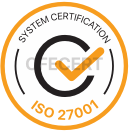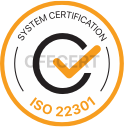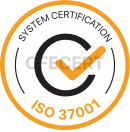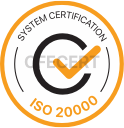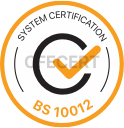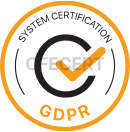Information security isn’t just a technical requirement; it’s a cornerstone of corporate sustainability. Especially in fields with high competition and complex supply chains, like the automotive sector, information security standards are critically important for both legal compliance and building trust with business partners. In this context, TISAX and ISO/IEC 27001 are two fundamental systems organizations use to strengthen their security posture.
Key Differences Between TISAX and ISO/IEC 27001
| TISAX | ISO/IEC 27001 | |
| Target Audience | Automotive industry supply chain | All sectors and organizations |
| Scope | Sector-specific, standardized, focused on supply chain risks | Broad, flexible, organization-specific |
| Assessment Approach | Standardized, results shared on a central platform | Risk-based, customizable, certification through external audit |
| Assessment Results | Shared standard assessment results | Certification based on audit results, no central database |
| Updates | Frequent, annual revisions based on sectoral needs | Less frequent, structured revision process (typically every few years) |
| Stakeholders | Automotive OEMs, suppliers, industry working groups | Leadership, stakeholders from all organizational functions |
| Integration & Data Sharing | Central database, integration with supplier management systems | No standard data sharing platform |
Why Both Standards Should Be Implemented Together
While TISAX focuses on the specific needs of the automotive sector, ISO/IEC 27001 offers a broader security management system. When implemented together:
- TISAX ensures reliability and transparency throughout the supply chain.
- ISO 27001 promotes a culture of corporate-level risk management and continuous improvement.
- Synergy enhances the security of internal processes and the reliability of relationships with external stakeholders.
Strategic Benefits
For successful TISAX implementation, organizations must first define the scope in alignment with the specific requirements of the automotive supply chain. Collaborating with certified assessment providers is crucial in this regard. Sharing assessment results through a central database increases transparency and trust with business partners while preventing unnecessary duplicate audits. Furthermore, organizations must operate continuous improvement processes and be prepared for regular reviews to comply with TISAX’s annual revision cycle.
For ISO/IEC 27001 implementation, the top management’s commitment and leadership regarding information security are critical factors for success. Organizations should conduct risk assessments specific to their context, determine and implement appropriate controls for these risks. Documenting all these processes with policies and procedures is necessary for preparing for external audits. Additionally, increasing security awareness throughout the organization and fostering a culture of continuous improvement are fundamental elements that ensure the sustainability of ISO 27001. CFECERT, as a UKAS, IAS, and TURKAK accredited certification body, offers auditing and training services.
At this point, professional expert support is critically important for correctly structuring the process and effectively preparing for audits. If you’re looking for a strategic partner on your security journey, you can contact CFECERT Training and Certification Services at info@cfecert.co.uk.



